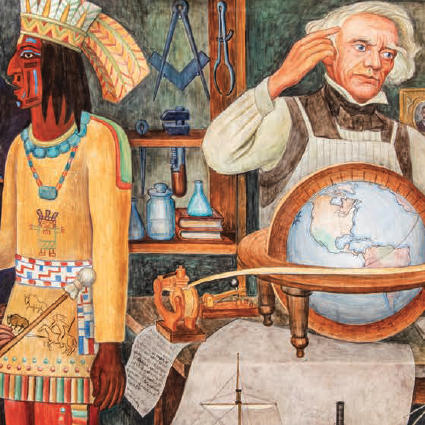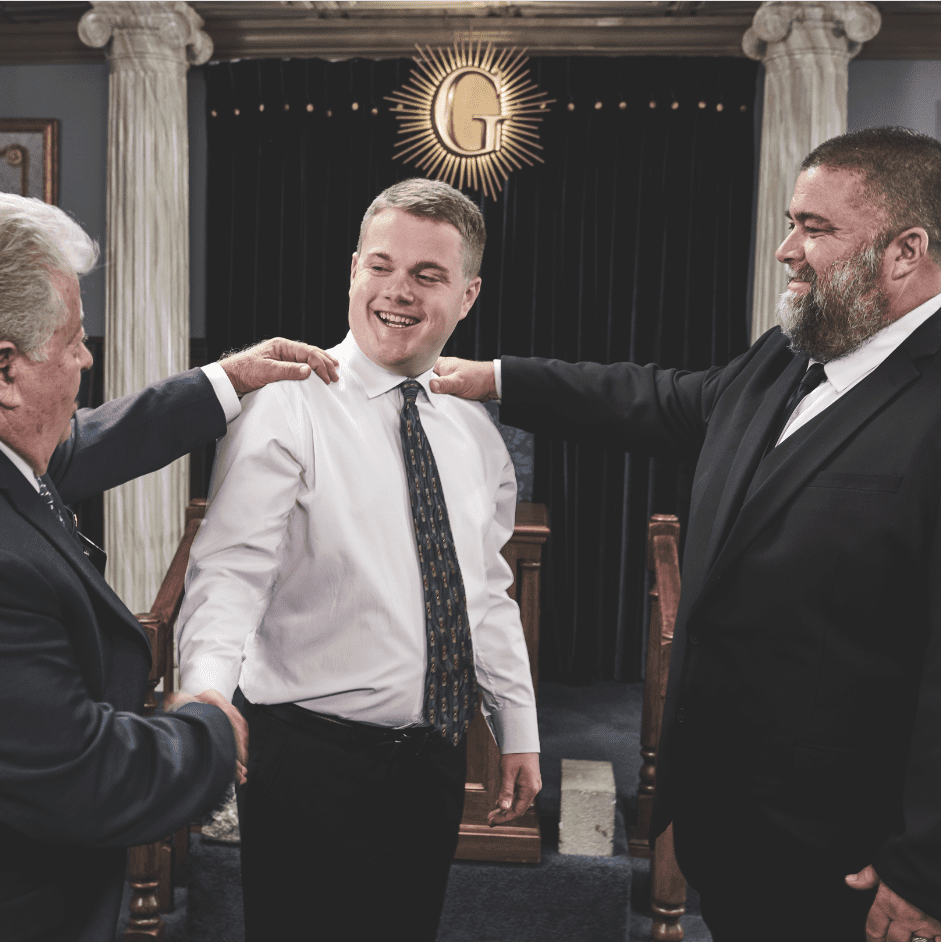
Eye of the Beholder
Could a hiding-in-plain-sight Masonic icon change the way we understand a Diego Rivera masterpiece?

By Ian A. Stewart
It’s hard to say whether things have always been this way, or if our current moment is making it worse, but it certainly feels as though we live on two different planets these days. From politics to science to pop culture, we’ve drawn our battle lines. That’s not to minimize anyone’s feelings or beliefs: When we’re yelling across the divide, it’s almost always from a place of conviction.
But the division isn’t sustainable. So how can we learn not just to tolerate, but to actually engage each other? Luckily, Masons have resources all around them—including professionals experienced in conflict resolution. California Freemason tapped into that collective brainpower for some practical advice on learning to listen, giving an inch, and—maybe—diffusing a bomb.
Here’s an easy one that won’t cost a dime: Tell someone you hear them. “You don’t have to agree to validate their experience,” says Lizette Martinez, the manager of outreach and education for Masonic Outreach Services (MOS). “Let them express themselves without interruption.” Recognize that they may be coming to their position from a different place than you. “Validation means acknowledging that you heard what they said and that, from their perspective, it makes sense that they have the response they have,” Martinez says. “The biggest misconception is that if you validate someone, you’re agreeing with them. It’s so very untrue.”
When case managers from Masonic Outreach Services encounter difficult calls—and they often do—the tool they rely on most is empathetic listening. “I know empathy might seem squishy and vague, but it’s the foundation for navigating these types of interactions,” says Sol Silverman, manager of Masonic Assistance. Describe their position back to them and let them correct you if you’ve got it wrong. Ask for clarification. Says Jodi Mikel, programs manager for the Masonic Center for Youth and Families (MCYAF), “Be aware of your posture and nonverbal communication. Be sure you are promoting interest and attentiveness. If you’re pacing around, rolling your eyes, or fidgeting, it shows a lack of interest.” You can’t argue with how someone feels, so frame the exchange in first-person statements, Silverman advises.
Everyone wants to feel seen. When they sense that they’re not, they want to leave. “This is particularly important when members have stepped back from their lodge,” Mikel says. “They want people to see that [they’re] hurt, [they] disagree. Does somebody notice that [they’re] not here? That’s huge.” Noticing people’s absence or silence is an important first step to mending a relationship before it’s fractured beyond repair.
Masons have well-established terms of etiquette and engagement. The same rules apply to conflict resolution. “Community agreements have always been something I implement in groups,” Martinez says. These should be agreed upon by everyone, rather than come as a directive from the top. Leadership is about reminding people to play by the rules. Silverman adds, “It’s really up to lodge leaders to enforce these expectations and redirect the conversation when necessary.” But the lodge’s usual code of conduct doesn’t cover everything, so it’s important to establish a specific set of norms that ensure everyone feels heard and respected. “Someone might say, ‘When I’m speaking, I don’t want to be interrupted,’ ” Silverman says. “Or, ‘If I say something that offends you, I want you to feel comfortable telling me that.’ Allowing members to participate in coming up with these rules will make it more likely that they’ll be followed.”
Self-awareness is one of the hardest traits to develop—and one of the most important when it comes to dealing with others. “Everyone has biases, values, and buttons that get pushed,” says Sabrina Montes, executive director of Masonic Outreach Services. “The first step is being aware of them so that when we’re being triggered, we know why.” That level of self-reflection helps us understand our reactions and gives us the chance to change them, if that’s the way forward. Says Mikel, of MCYAF, “Other people don’t know our biases. We don’t wear them on a T-shirt.” When people offend our sensibilities, they usually aren’t doing it on purpose—they just don’t subscribe to the same set of values as us.
An unfortunate part of the job for Silverman is that he isn’t always able to help every person he encounters in precisely the way they might like. “You may get requests that cannot reasonably be fulfilled,” he says. Instead, be prepared to offer support in other ways. “When we get a request for assistance and the person doesn’t meet eligibility criteria, we don’t just say good-bye and hang up. We offer to provide consultation, information, and referrals. That service is nearly always accepted and appreciated, because our time and expertise is valuable. So even though the person didn’t get what they called for, they hang up feeling supported.”
In the same manner as validating another person’s position, it’s important to take what Montes calls a “strength-based approach” to acknowledging what they’re trying to accomplish. That means recognizing the positive intention behind words or actions, even if they’re off-putting. That opens people up to new ways of accomplishing their goals. If an older member argues that he doesn’t want to change how the lodge holds a fundraising event, try to see the positive side of what he’s saying. “Perhaps this older member is a ‘tradition holder,’ someone who wants to preserve the lodge culture that’s important to him,” Mikel says. Recognizing good intentions creates a space of understanding where you might find compromise.
Compromise isn’t always the goal, though—nor is closure. “The most common mistake people make is being too solution focused,” Martinez says. “Most of the time, we are more helpful just by being present with our whole self and providing empathy.” Quoting the leadership researcher Brené Brown, she says, “The truth is, rarely can a response make something better. What makes something better is connection.”
“Remind yourself of the purpose. The purpose for every Mason is brotherhood,” says therapist David Quinteros of MCYAF. Everything else—the disagreements and arguments we all encounter—is secondary. “Brotherhood is significant due to the connection and bond people make when becoming a Mason.” Says Mikel, “Stripping it all down, there’s commonality there. You’re still brothers despite your differences, and that’s a great thing.”
ILLUSTRATION:
Alamy

Could a hiding-in-plain-sight Masonic icon change the way we understand a Diego Rivera masterpiece?

